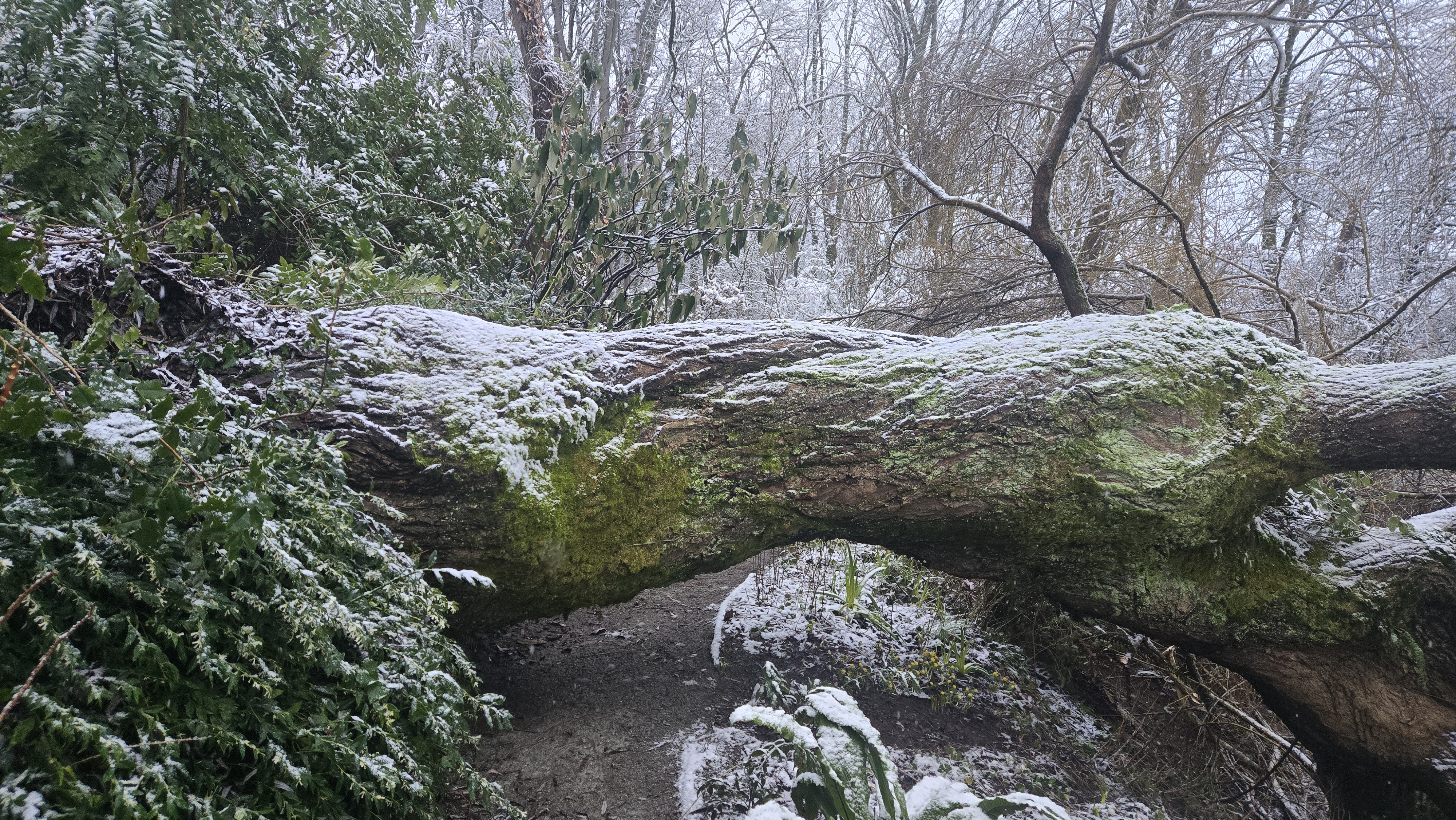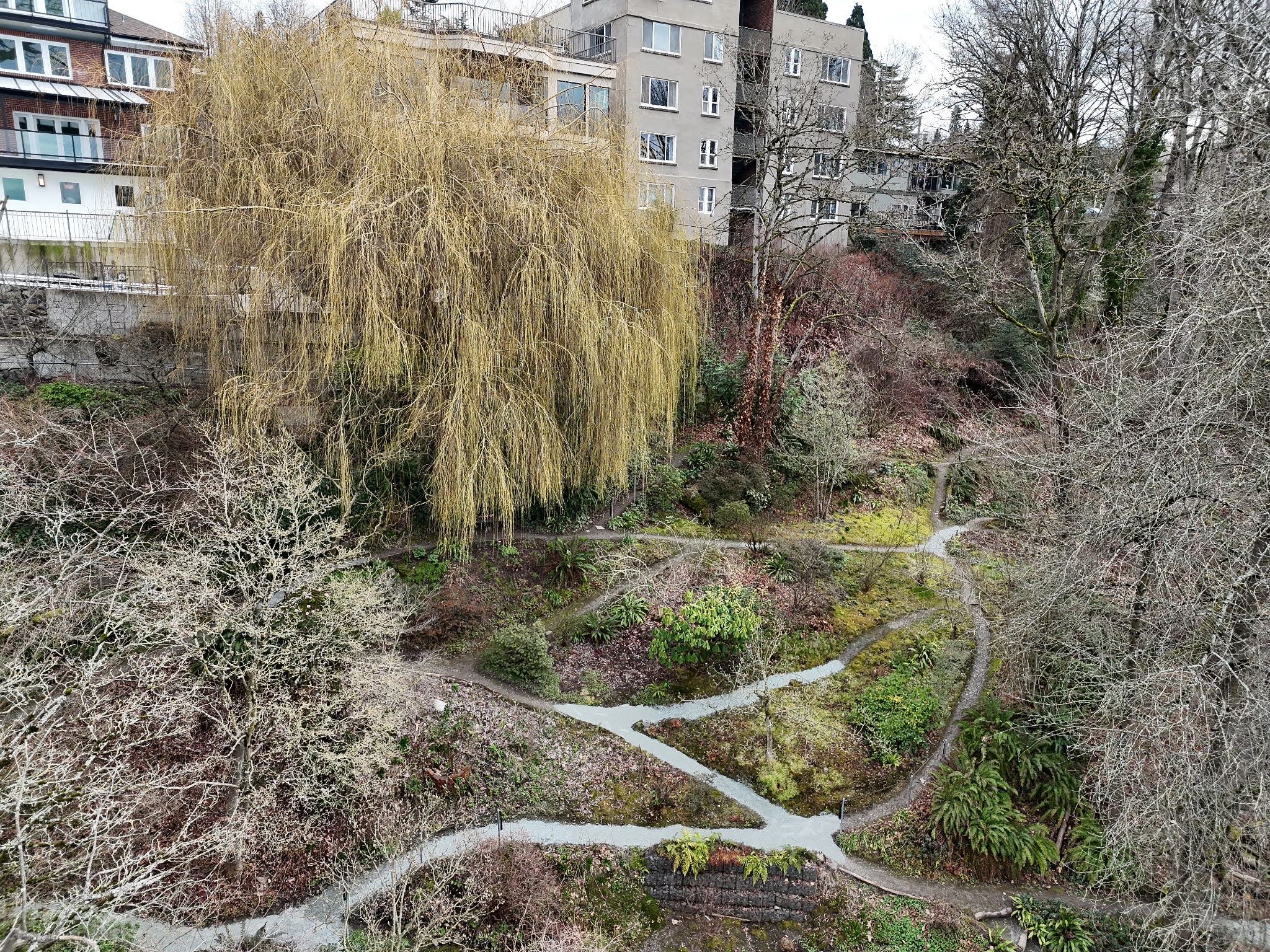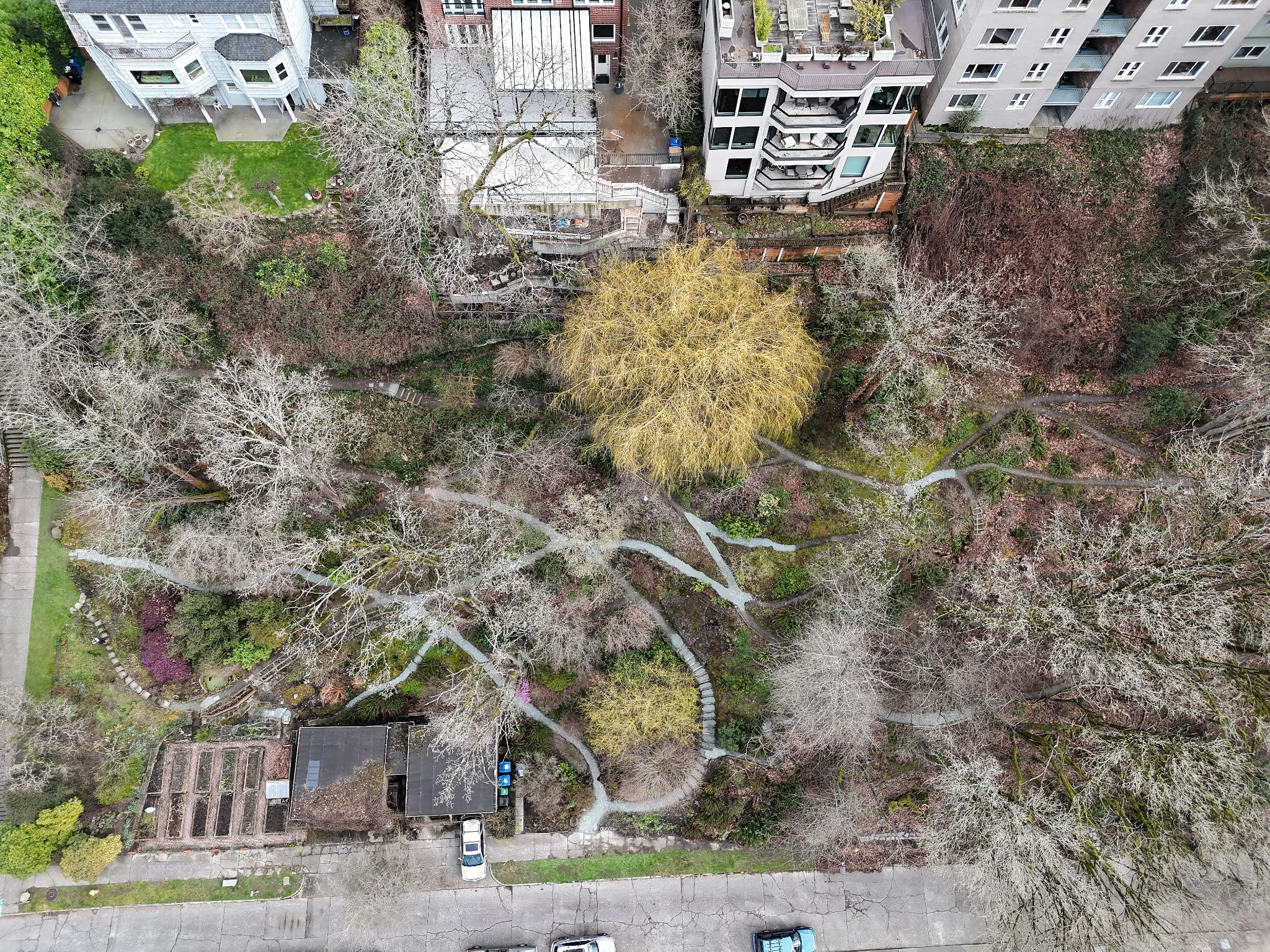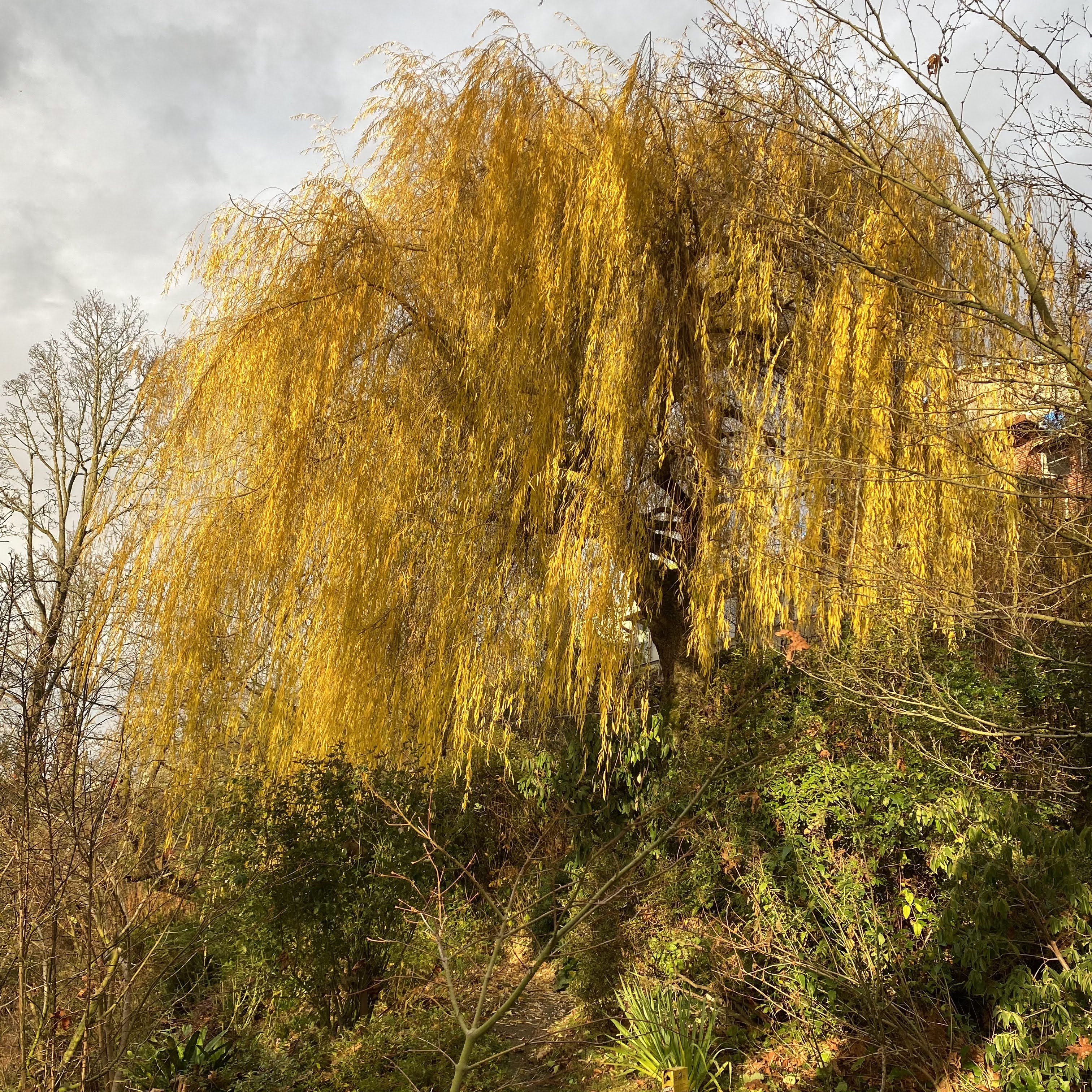Our beloved weeping willow
Disaster
In the early morning on Feb 6, 2025 we lost our iconic weeping willow because of a heavy wet snow load. Ben suspects that a fairly large branch snapped, shedding snow onto the already heavy tree. This sudden extra weight was too much for the tree to support.This is a devastating loss to the garden, and caused a huge amount of damage. The removal of the debris will be handled by Parks at some time in the future. We are in the early planning stages of figuring out how to honor this beloved tree, and will keep everyone updated as we learn move about how the loss of this tree affects the garden.
Background
Weeping willows (Salix babylonica) are generally short lived trees, that are relatively brittle. They prefer moist locations, and because of their fast growth habit, frequently drop large amounts of debris, sometimes including large branches. Ben doesn't remember a time when the willow wasn't there, though we don't have an estimate of it's age yet. Years ago, Ben interviewed one of the homeowners directly east of the willow, and learned that a stream used to flow between the two buildings at was filled in at some time prior to 1990. Until the tree toppled, we were unsure if our beloved tree had been planted at that level, or if the top of the root ball had been buried over the years. We were happy to learn that there was only about a foot of leaves over the the root ball, which is probably natural.
The first order of business after opening as many paths as possible was to start assessing the damage and rescuing some of the special perennials that might be trampled during the clean up. We know we've lost one large rhododendron, and suspect one magnolia won't make. Two other magnolias sustained various amounts damage, one of which might not make it. Another rhododendron was badly damaged, but has lots of branched that had already rooted in the ground. There are several roses in the debris that we won't know the status of unitl they leaf out. The basalt bench seems to have been protected by the curve of the tree, and appears to not have moved very much.
The first few days of clean up have been both devastating and disorienting as we try to navigate through the debris both because of the loss of the willow and other plants, and because there was a blanke of snow on the ground. It's been interesting to see how many people refer to the tree as a female. We noticed that in the top photo here, one can see the shape of a reclining woman in the trunk. During the first day of clean up, one person showed ended up to help clean up. She was very connected to the tree, and has a spiritual connection to it. It was very healing to spend several hours talking about the tree, the garden, and life in general.
While we wish we could simply just tilt the tree back up, major roots broke and the tree would not be able to survive. It will be very interesting to see how the once shady area will respond to more sun. Luckily, most of the shade came during the morning and early afternoon. We know the willow drank up lots of water. It will be interesting to see if there's more ground water (no longer absorbed by the tree), or if the soil will become dryer from more sun hitting the soil. Both the large pink magnolia that was being smothered by the willow, and the two edgeworthias north of the stone bench will enjoy the added sun.
While no tree will ever replace our beloved willow, we are starting the conversation on planting a new tree. In many ways it seems sad to plant a new tree in the exact location, but on the other hand the topography of the garden makes it an iconic location. In the meantime, we're taken some cutting in case we want to clone the tree.




